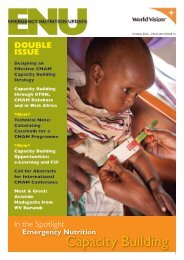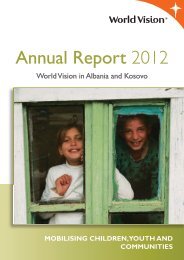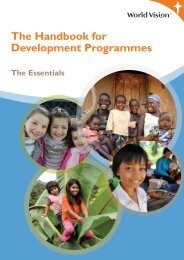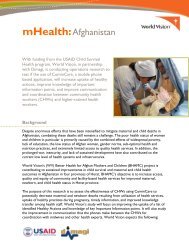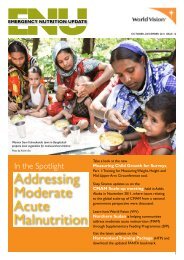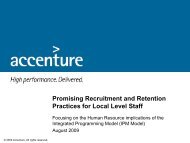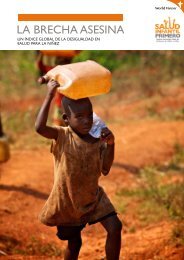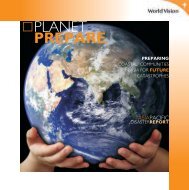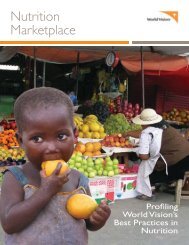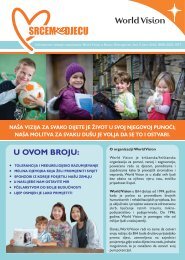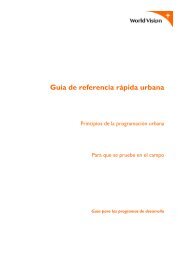the right to inclusive education for children with disabilities
the right to inclusive education for children with disabilities
the right to inclusive education for children with disabilities
Create successful ePaper yourself
Turn your PDF publications into a flip-book with our unique Google optimized e-Paper software.
The situation of services <strong>for</strong> people <strong>with</strong> <strong>disabilities</strong>Map of <strong>the</strong> network of services <strong>for</strong> disabled individuals at a national levelEvaluation of <strong>the</strong> situation of services <strong>for</strong> people <strong>with</strong> <strong>disabilities</strong> is based on <strong>the</strong> number of centers thatprovide residential and community services and domestic services from public and private institutions, <strong>the</strong>capacity of centers, <strong>the</strong> extent of <strong>the</strong>ir usage, <strong>the</strong> types of services offered.For people <strong>with</strong> <strong>disabilities</strong> both public and private residential community services are providedTreatment of <strong>children</strong> <strong>with</strong> <strong>disabilities</strong> in our country is provided in <strong>the</strong> following directions:• residential or daily social public services;• non-public social services;• community-based social services;• assistance through disability pensions;Priority has been given <strong>to</strong> <strong>the</strong> trans<strong>for</strong>mation of services <strong>to</strong> consolidate and improve <strong>the</strong> existing situationin residential and semi-residential institution, always bearing in mind <strong>the</strong> context and environment in which<strong>the</strong>y are located.Residential centers in general, are of a social-health nature, are intended <strong>for</strong> persons <strong>with</strong> <strong>disabilities</strong> olderthan <strong>the</strong> norm required by <strong>the</strong> compulsory <strong>education</strong>, which are on continuous assistance and seem <strong>to</strong> bedeprived of needed family care support, or <strong>for</strong> which, staying <strong>with</strong> <strong>the</strong>ir families is definitely impossible, and(as it happens <strong>for</strong> a good part of <strong>the</strong>se <strong>children</strong>) are abandoned by <strong>the</strong>ir biological family. Semi-residentialcenters of health and social care in nature, <strong>with</strong> daily service are intended <strong>for</strong> young or adult individuals<strong>with</strong> severe <strong>disabilities</strong>.Each center is based on community services charter including:• services build in such a way as <strong>to</strong> facilitate cooperation between individuals <strong>with</strong> <strong>disabilities</strong> and<strong>the</strong>ir families. Each structure operates through:• managerial personnel;• social - health personnel, which possesses <strong>the</strong> relevant qualifications, socio-sanitary and educativepersonnel, which possesses relevant qualifications;• community based day services that un<strong>for</strong>tunately are in small numbers;• services in families (as a new type of services);In <strong>the</strong>se centers, organization of work is accomplished through teamwork, annual programs, <strong>education</strong>and training of <strong>the</strong> staff <strong>with</strong> assigning of <strong>the</strong> responsibilities, as well as supervision from <strong>for</strong>eign experts. In<strong>the</strong>se centers, types of beneficiaries are 3–18 year old <strong>children</strong> and adults over 18 years; in general, <strong>the</strong>seinstitutions have mixed beneficiaries, both <strong>children</strong> and adults. Based on <strong>the</strong> <strong>for</strong>ms of disability: 70% psychophysical,6% of <strong>the</strong> type of sensitivity and 24% <strong>with</strong> all types of disability.The approach <strong>for</strong> <strong>the</strong>se <strong>children</strong> aims <strong>to</strong> be effectively able <strong>to</strong> receive <strong>education</strong>, training, health services,rehabilitation services, preparation <strong>for</strong> employment and recreational activities, in order that <strong>the</strong> childmay accomplish a fuller social integration and individual development, including its cultural and spiritualdevelopment.Public sec<strong>to</strong>r, offers services in seven residential centers and community centers in 10 districts of Tirana,Shkodra, Elbasan, Berat, Korça, Vlora, Durrës Lezha, Kukës and Dibra. Within <strong>the</strong> framework of decentralization,all public residential centers have passed under dependency and administration from local units.Non-public sec<strong>to</strong>r, services are offered in eight residential centers and 29 community centers in <strong>the</strong>Districts of Tirana, Shkodra, Korça, Elbasan, Kukës, Durrës, Gjirokastër and Berat.Public services <strong>for</strong> people <strong>with</strong> <strong>disabilities</strong> are offered in 17 centers or in 31% of <strong>the</strong> <strong>to</strong>tal number.In nonpublic centers, <strong>the</strong>re are provided services <strong>for</strong> 37 centers or 69% of <strong>to</strong>tal number. As it can be noticed,26 The <strong>right</strong> <strong>to</strong> Inclusive Education <strong>for</strong> <strong>children</strong> <strong>with</strong> Disabilities



